
May 17 - 23, 2023 Vol. 31 No. 20 $1.85 + Tips go to your Vendor $3

4 6 7 8 13 15
Arts & Entertainment Event highlights of the week!


SportsWise
Ex-Green Bay quarterback Aaron Rodgers moves to the NY Jets.
HealthWise
Dr. Marina Claudio, medical director at Molina Healthcare of Illinois/Wisconsin, discusses how to navigate the Medicaid redetermination process.

Cover Story: Who is Chicago for?
Pulitzer Prize-winning architecture critic Blair Kamin asks "Who is the City For?" in his latest book, a compilation of columns he wrote while at the Chicago Tribune. The answer – if Chicago is to grow its population – is "that cities are for everyone: not just the bourgeoisie. They should be for the poor, the homeless, the working class,” Kamin said in a discussion with StreetWise.
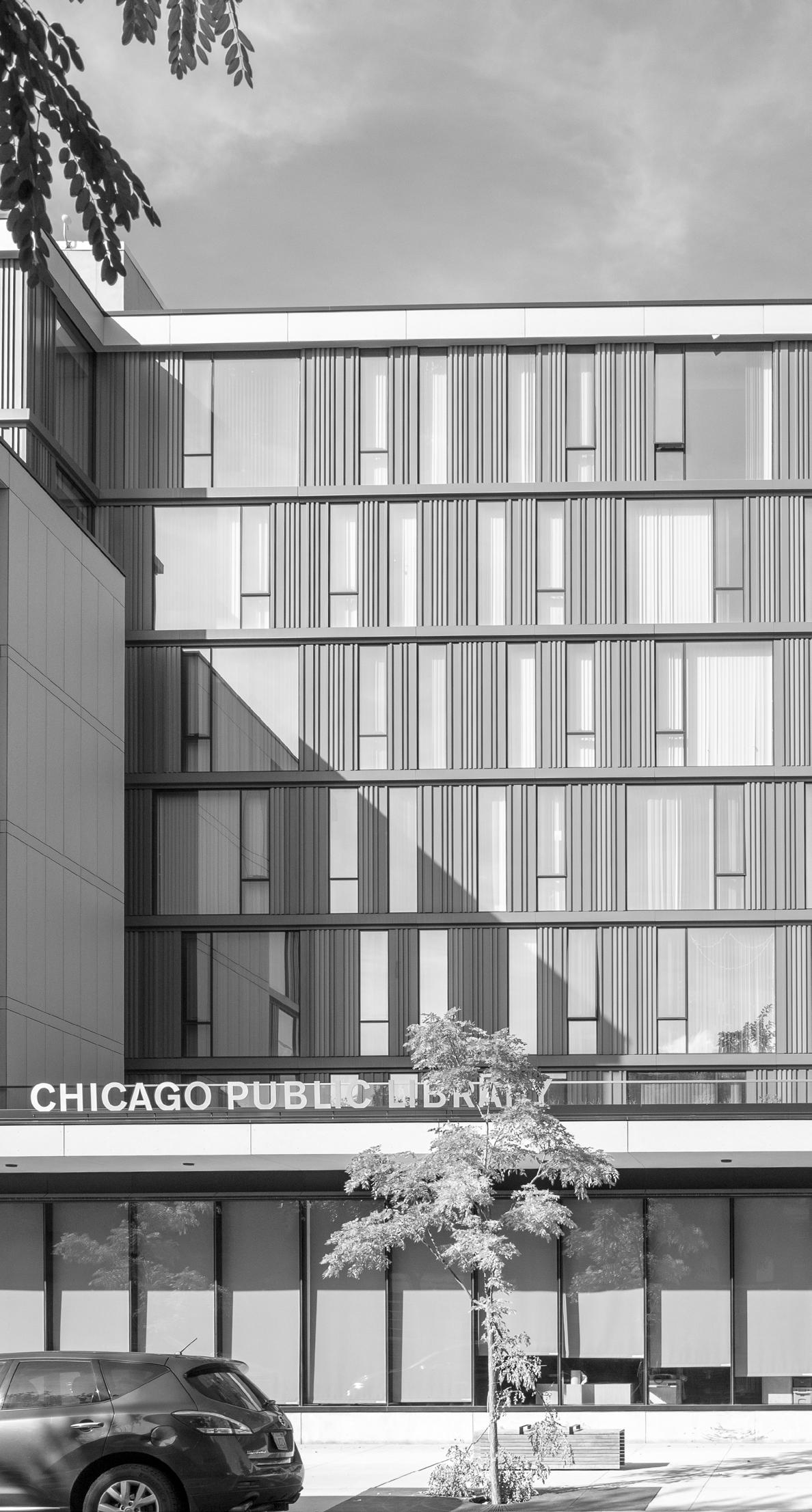
From the Streets

Abraham Lacy, Far South Community Development Corporation president and interim executive director of the Roseland Medical District, discusses the synergies between expanded health care there and extension of the CTA Red Line, which would improve outcomes for these communities.
The Playground
ON THE COVER: Millennium Park THIS PAGE: The Chicago Public Library, Little Italy branch and Taylor Street Apartments, 1336 W. Taylor St. Both photos by Lee Bey. DISCLAIMER: The views, opinions, positions or strategies expressed by the authors and those providing comments are theirs alone, and do not necessarily reflect the views, opinions, or positions of StreetWise.
Dave
Amanda
Julie Youngquist, Executive director jyoungquist@streetwise.org
Chicago, IL, 60616
make a donation to StreetWise, visit our website at www.streetwise.org/donate/ or cut out this form and mail it with your donation to StreetWise, Inc., 2009 S. State St., Chicago, IL 60616.
appreciate your support!
donation is for the amount of $________________________________Billing Information: Check #_________________Credit Card Type:______________________Name:_______
accept: Visa, Mastercard, Discover or American Express Address:_____ Account#:_____________________________________________________City:___________________________________State:_________________Zip:_______________________ Expiration Date:________________________________________________Phone #:_________________________________Email: StreetWiseChicago @StreetWise_CHI
MORE AT streetwise.org
DONATE To
We
My
We
LEARN
Hamilton, Creative Director/Publisher dhamilton@streetwise.org
Suzanne Hanney, Editor-In-Chief suzannestreetwise@yahoo.com
Jones, Director of programs ajones@streetwise.org
St.,
Ph: 773-334-6600 Office: 2009 S. State
ARTS & ENTERTAINMENT RECOMMENDATIONS
Choo Choo!
Pullman Railroad Days 2023
Join Historic Pullman Foundation for its annual Pullman Railroad Days at Pullman National Historical Monument, 610 E. 111th St., 9 a.m. - 5 p.m. on May 20 & 21. This weekend-long celebration is about the important Pullman story: railroad innovation and the people who drive it. In partnership with Metra, and the American Association of Private Railroad Car Owners, visitors will be able to explore historic Pullman rail cars from different eras at the 111th Street/ Pullman Metra Electric station. Included are the 1923 New York Central 3, the 1950 Royal Street Observation car, and the 1949 Colonial Crafts. Railroad Days is a mix of free events and single-ticket entry access to some sites. (Regular Adult tickets are $30. Children under 12 attend free with an adult ticket holder.) Also featured is the Pullman National Historical Monument Visitor Center, activity fair, VR experience and Rail Engineer simulator (hosted by Norfolk Southern), food trucks, live music, and more!

A Chicago Treasure!

Fine Arts Building Celebrates 125th Anniversary Chicago’s historic Fine Arts Building, 410 S. Michigan Ave., celebrates its 125th anniversary this year with two new public exhibits, "Art Alone Endures" and "Staging Ground," a self-guided walking tour of significant sites, and special programming that highlights the artists and companies that have made the building an artists' haven since its founding in October 1898. Open Studios are free to attend on the second Friday of every month from 5-9 p.m., and include gallery openings, special performances and artistic demonstrations. Exhibits and tours are free and open to the public during regular building hours any day of the week. More information at www.fineartsbuilding.com/
A Film Fest Highlight!
'The Pianist from Ramallah'
Four years in the life of Muhammad “Misha” Alsheikh, a talented teenage pianist from Ramallah, who is the son of a Palestinian father and a mother who came from Russia. It takes Muhammad 3 hours to get from his house to a piano lesson with Emma, his Jewish-Israeli teacher who also came from Russia and now lives in Jerusalem, but his dream is bigger than borders. Between checkpoints, auditions and his father’s wish that he become a doctor, he tries to fulfill his dream of becoming a professional pianist – and also stay happy. The film will be followed by a discussion with author James A. Grymes about his book “Violins of the Holocaust—Instruments of Hope and Liberation in Mankind’s Darkest Hour,” at the Illinois Holocaust Museum, May 21, 2:30 p.m., $5 at jccfilmfest.jccchicago.org/calendar/

Historical Exhibition!

‘The Girl in the Diary’
Through historical artifacts and documents, interactive touch screens, documentary videos, and exceptionally rare photographs, “The Girl in the Diary” explores the story of a young girl’s fight for survival in the Łódz Ghetto and reconstructs what might have happened to Rywka Lipszyc after her deportation to Auschwitz. “The Girl in the Diary” is a tribute to the life of a child who will not be forgotten, at the Illinois Holocaust Museum, 9603 Woods Drive, Skokie. Opening presentation is 6:30 p.m., May 18, and the exhibit continues through September 24. Tickets are $18 at www. ilholocaustmuseum.org/exhibitions/the-girl-in-the-diary-searching-for-rywka-from-the-lodz-ghetto/

ARTS & ENTERTAINMENT
4
Compiled by Dave Hamilton & Emma Murphy
Impressionists on Display!
‘Van Gogh and the Avant-Garde: The Modern Landscape’
More than 75 paintings and drawings from the late impressionist era, including 25 works by Van Gogh, many from private collections and rarely displayed, come together for this exhibition. Combining these works not only sheds new light on the boundary-pushing techniques Van Gogh and his fellow painters developed during this time, it illuminates the power of place to inspire. Open May 14 - September 4 at the Art Institute of Chicago, 111 S. Michigan Ave. Tickets are $10 and separate from museum entrance at www.artic.edu

A Living Legend!
Yayoi Kusama at WNDR Museum

Yayoi Kusama, the eminent Japanese artist, is known for her vibrant and hypnotizing installations, from mesmerizing infinity rooms to playful polka dot pumpkins. Her art is an invitation to escape into a world of fantasy, color, and infinite possibility. At the WNDR Museum, 1130 W. Monroe St., you’ll have the opportunity to step into Kusama’s dazzling universe and experience the awe-inspiring beauty of her art firsthand. An end-date hasn’t been set, but it is a limited-time experience, so don’t wait! Tickets start at $32 for adults and $22 for children at wndrmuseum.com
Hips Don't Lie!
‘Chicago’s Legacy Hula’
“Chicago’s Legacy Hula” is a new exhibition within the Regenstein Halls of the Pacific at the Field Museum honoring four Kumu Hula (Master Teachers of Hula) who migrated to Chicago and developed their communities in the Midwest. The exhibit grand opening is 9 a.m.-5 p.m. Thursday, May 26 and the opening celebration is 1-3 p.m. May 27, in collaboration with the Aloha Center Chicago. Included with admission to the Field Museum, 1400 S. DuSable Lake Shore Drive. Tickets available at entrance or at fieldmuseum.org

A Tribute to our Heroes!
Memorial Day Wreath Laying Ceremony & Parade
The Wreath Laying Ceremony will begin at 11 a.m. at Daley Plaza, 50 W. Washington St. The Parade will step off at noon and proceed south on State Street from Lake Street to Van Buren Street. Maj. Gen. Rodney Boyd, Assistant Adjutant General – Army of the Illinois National Guard and Commander of the Illinois Army National Guard, will serve as the parade’s Grand Marshal. Originally from Chicago’s South Side, Maj. Gen. Boyd is the highest-ranking African American officer in Illinois National Guard’s history. The Wreath Laying Ceremony will also be livestreamed at Chicago.gov/live


An


‘Beyond Antiquity’

Inspiring Journey!
Most of the works in “Beyond Antiquity” were inspired by John Fotiadis’ trips to Greece, during which he searched for meaning in the architecture of antiquity and its relationship to nature. In a series of nearly 40 drawings, paintings and digital artworks, Fotiadis explores classical antiquity in Greece, and takes us into the present and future via the same subjects: architecture, myth and landscape. The exhibit is open 10 a.m. - 4 p.m., Thursday through Sunday, May 12-September 30, at The National Hellenic Museum, 333 S. Halsted St. Tickets are $10 and include admission to all exhibits at nationalhellenicmuseum.org/exhibits
High Heels & High Camp!
Dancing Divas
Now in its 15th year, Dance Divas was conceived as a platform to bring together and highlight the talent of Chicago’s dance community while raising money for and awareness of the critical health issues facing dance industry professionals. Since its inception in 1996, Dance Divas has contributed more than $250,000 to The Dancers’ Fund. This year’s theme is “A Night at the Movies,” featuring leading male professional dancers in full drag honoring the legendary dancing divas from the silver screen. Performances are May 20 at 7 p.m.; and May 21 at 4:30 & 7 p.m. at The Baton Show Lounge, 4713 N. Broadway. Tickets start at $75 at dancedivaschicago.com

www.streetwise.org 5
Did the Jets get a 'Discounted' aaron rodgers?
Patrick : Fellas, former N.Y.. Jets Hall of Famer QB Joe Namath–yes–offered up his retired No. 12 to incoming QB Aaron Rodgers, traded to the Jets from Green Bay. Rodgers has worn No. 12 throughout his pro career, but he will wear No. 8, his college jersey at Cal, with the Jets.
Russ: And what’s wild is Joe Namath led the N.Y. Jets to a championship way back in 1969 for its only Super Bowl win.
John: Over 50 years ago!
Patrick : The now-former Green Bay Packer quarterback has picked it up and laid it back down out on the East Coast. He’s even flipped leagues. From the National Football Conference—the NFC—to the American Football Conference—the AFC.



Russ: Yes, it has to be this season. While the dang near eternal Tom Brady was able to keep it going well into his 40s, not many quarterbacks in this league—starters with legitimate playing time—will be able to scoot on over that 40-year-old line. Aaron Rodgers is 39-years-old.
John: I believe the Jets got the better end of the deal. They drafted defensive end Will McDonald IV at #15—one of the picks the Jets received with Aaron Rodgers—while the Packers selected a de -
fensive end as well, Lukas Van Ness. Will McDonald IV, last year at Iowa State, had 27 tackles, 5 assists, and 24 stops, while Van Ness had only 15 tackles, 11 assists, and 18 stops.
Donald: How do you think the Packers will do in the upcoming season?
John: They didn’t do enough in this draft to address the team’s needs. They got some defensive support, but I don’t believe they did enough to protect the new starting quarterback in Green Bay, Jordan Love. That’s one thing the Jets did do: selected a couple of offensive linemen: a center at #42, and an offensive tackle at #120.
Russ: The Jets did well to add a couple of offensive-line pieces, considering Rodgers' age. But let me say to Aaron Rodgers: “Good luck playing for the Jets. I’m glad you’re gone from our division, and we’ll now
really get to know how good you are when you have to play the Buffalo Bills twice this year!”
Patrick : The AFC East is much tougher than our Bears-inhabited NFC North, so while Rodgers could do well this upcoming season with that top-notch supporting cast in New York, we— the Bears—could at least beat Green Bay.

Donald: That ain’t no good! I’m not trying to win because there’s no opponent. I want to win because I physically beat someone. Out-thought someone. Not have someone have to forfeit or something.
Patrick : Good point. Plus, we ain’t guaranteed to beat them even without Rodgers. Shoot, I’ll root for them as I always do, but hopefully, that “thing” the Packers have on us is gone with Rodgers.
Russ: I believe Green Bay made out like fat cats with
this one. The Jets picked up a 39-year-old quarterback in the hopes that he could give them a few good seasons. Just not a bet I want.
John: Listen, even if Aaron ends up with the same record as last year’s record with Green Bay—8-9—he’s so much more likely to not even come close to the playoffs in the Jets division than in the Packers' and Bears' one.
Patrick : All right. So, what y’all say? Thumbs up? Down?
John: Thumbs up for the Jets.
Donald: With you.
Russ: Thumbs down for me. Rodgers is too old.
Patrick : Good stuff, fellas. Thumbs up, for me, to the Jets: I believe Aaron’s got a little bit left in the tank.
Any comments or suggestions? Email pedwards@streetwise.org
SPORTS WISE
Rashanah Baldwin
Vendors Russell Adams, John Hagan and Donald Morris chat about the world of sports with Executive Assistant Patrick Edwards.
Medicaid redetermination process
In 2020, in response to the COVID-19 Public Health Emergency, the State of Illinois paused the annual redetermination process for Medicaid eligibility. This process resumed May 1, 2023.
What is Medicaid redetermination?
This process normally happens once a year. The state may ask questions that include, what is the annual household income. They may ask you to confirm your address, and how many people are in your household.
The state will confirm your income by asking for copies of your pay stubs, and other possible sources of income such as Social Security, SSI, Unemployment, etc. You will also be asked if anyone in the house is pregnant and the expected number of babies. They will also ask if anyone in your house is covered by other health insurance.
Once you complete your response, and supply the required paperwork, the State will review your answers. This information is used to decide if you and/or your family are eligible to continue with the Medicaid program.

When does this happen?
Not everyone has the same redetermination date. Your redetermination will take place over the course of the next 12 months. Be on the lookout for a letter from the state, requesting this information. Once you receive it, you will only have 30 days to complete your response and send it back. If you don’t send it back, you will lose your Medicaid coverage.
You can check your redetermination date using Manage My Case at www.abe.illinois.gov . This is also the best way to respond to the request.
When you get your notice, here are the ways to respond:
• Online through Manage My Case at www.abe.illinois.gov
• Over the phone by calling 1-800-843-6154
• Fill out the form and mail or fax it back
° Mail to: P.O. Box 19138, Springfield, IL, 62704
° Fax to: 1-844-736-3563
• In person at a local DHS office, or community connector location. You can call 1-800-8436154 to find a location near you.
Dr. Marina Claudio is a board-certified family physician who has been in practice since 2003. She is currently a Medical Director at Molina Healthcare of Illinois/Wisconsin. She's a graduate of the University of Illinois College of Medicine at Chicago and completed her residency in Family Medicine at the UIC/Advocate Illinois Masonic Family Medicine Residency Program.

7 HEALTH WISE
7
by Dr. Marina Claudio
WHO IS THE CITY FOR?
by Suzanne Hanney
Blai r KamIN on his book & the city's projects
Chicago is like an oil tanker, not a little boat that can turn on a dime, so improving life for all its residents can take generations. But it must be done, if Chicago is to be a good city, a fair city, and an effective one, says Pulitzer Prize-winning architecture critic Blair Kamin.
“That’s the way that you drive the population up,” Kamin said in an interview about his new book, “Who is the City For?,” (University of Chicago, 2022) a collection of columns he wrote in the Chicago Tribune.
“You know, if the city is for the top 1% only, and the upper middle class only, Chicago’s never going to get back to three million people,” Kamin said. “It’s going to keep declining in population. But if we rebuild the city with equity as a guiding principle, then we have a chance to attract people rather than lose them, a chance to rebuild the tax base. But it takes time, and it’s not going to happen overnight.”
“Equity” is a term he took from the financial services industry, where it implies a share of ownership.
“I see the city as a shared enterprise. It isn’t devoted to maximizing profit, it is devoted to maximizing economic opportunity for all the residents of a city. The philosophy of my book is that cities are for everyone: not just the bourgeoisie. They should be for the poor, the homeless, the working class.”
The role of government – the public sector – is to stimulate investment by the private sector so that Chicago grows, he says. The philosophy is neither Franklin Roosevelt/New Deal liberal nor Ronald Reagan/Margaret Thatcher conservative. It lets each sector do what it does best.
“The most important thing is not just to let the market run wild. We’ve seen that the market itself, left to its own devices, isn’t going to provide an equitable city. So, we need a public sector that is based on the fundamental idea that cities are for everyone.”
INVEST South/West, begun by Mayor Lori Lightfoot’s administration, is an example that works, he said. The initiative concentrates $750 million in public infrastructure spending (on transit, streets and more) in 10 disinvested business corridors on the South and West Sides. Architects are saving landmarks like the Art Deco Laramie Bank at Chicago and Laramie avenues, and designing new buildings around them.
“The program has attracted more than $2 billion to neighborhoods that many had written off as wastelands not worthy of investment,” Kamin said. “I’m concerned that Mayor [Brandon] Johnson wants to stop INVEST South/West. That would be a serious mistake.”
Mayor Johnson has called INVEST South/West a top-down program, led by City Hall. Kamin disagrees. “Numerous public hearings were held by the Department of Planning and Development, and they incorporated the public’s take on these projects.
“Before making a rash decision to end the program, I think Mayor Johnson should continue it. Watch what the outcomes are in the neighborhoods where this new investment has occurred and then evaluate whether to continue it, cancel it, or expand it.”
Yes, INVEST South/West has been slow to get started, Kamin conceded. But it has used public-private partnerships formerly limited to downtown projects like Millennium Park to bring retail stores, restaurants, and offices to impoverished neighborhoods. Chicago has lost 200,000 African Americans in the last two decades. Gun violence, lack of economic opportunity, a poor educational system are major reasons, but so is quality of life. They want neighborhoods where they find a grocery store and all their other needs in a 15-minute walk.
“That’s why I think INVEST South/West is so important, because it does a lot of different things simultaneously in terms of economic opportunity, safety. When you have vital streets, they’re more likely to be saved, because you have people watching the streets.”
8 COVER STORY
“Eyes on the street,” whether it’s people watching from storefronts or their front porches, is a concept from the Jane Jacobs book, “The Death and Life of Great American Cities” (1961 Random House). Practical and selftrained, Jacobs loved her Manhattan of the 1930s-60s. Unlike the antiurban rhetoric of recent years, she appreciated the population density that enables diverse businesses to start from scratch and flourish.

A homogeneous town might attract basic supermarkets, Jacobs wrote, but big cities naturally generate a variety of small enterprises: delicatessens, Viennese bakeries, art house cinemas. Her most-quoted words of wisdom from the book are, “Cities have the capability of providing something for everybody, only because, and only when, they are created by everybody.”
LaSalle Street Reimagined, another Lightfoot administration initiative, fulfills yet another Jane Jacobs mantra of relieving deadness by bringing more density, more diversity of uses, more connectedness, more eyes on the street – “something for everybody.” Three developments will bring over $560 million and 1,000 units of housing to three historic LaSalle and Monroe Street buildings that had largely been vacated for new construction on Wacker Drive. The City offered tax increment financing (TIF) to entice more than 30% (318) affordable units, up from the 20 percent normally required of projects seeking public assistance or zoning changes.
Vendor A. Allen: What do I Bring to the city?

I personally bring StreetWise magazines to the city of Chicago.
StreetWise is an informative magazine that has been around for 30 years. Founded in August 1992 by Judd Lofchie, it is one of many members of the International Network of Street Papers. Not only do I bring StreetWise magazines to the city of Chicago, but I also bring a part of myself as well: my personality, my entrepreneurship and my dedication. The dedication I bring requires discipline, determination, and application. It takes discipline to wake up and be at your location every day at the same time for your customers’ convenience. It takes determination to do this day in and day out without outside influence. My motivation comes from within. I am determined to work for myself and to become successful at being an entrepreneur.
All that's required of me is the application of certain principles, such as being polite, kind and respectful. Even when I don't approve of certain situations. For example, when someone is rude and disrespectful to me. I must be an example because I am considered to be StreetWise.
This application works if you work it. It has worked for me for over 12 years (about how long I've been with StreetWise). I am glad and proud to bring something to the city that is of value. Our magazine is informative, educational and entertaining. We vendors are the middle people and entrepreneurs who bring StreetWise to the city of Chicago.
If you don't have a personal vendor who sells StreetWise to you, you're welcome to come to Mariano's on Sheridan and Foster between 5 and 7 p.m. Monday-Friday. I'll personally sell you a StreetWise magazine.
www.streetwise.org 9
Laramie State Bank of Chicago, 5200 W. Chicago Ave. (photo by Lee Bey).
Vendor kianna drummond: who is the city for?

The city is for the rich and the poor, because without the rich, the poor wouldn’t have anybody or anywhere to shop.
To me, it’s crazy, because it’s like the poor, or the not-sowealthy, shop and spend more than the wealthy, or the rich. The wealthy are the sellers and the not-so-wealthy shop.
With that being said, a good landmark for me is the lowend projects. For instance, when the projects were up and running, it was an African American gated community where everybody knew everybody. If I needed some sugar, I could go knock next door and get a cup. If I wanted to play, I could go downstairs and play in the playground. It wasn’t hard to make friends, because we all came from the same place. Everybody knew everybody, to where if somebody new moved in, or came around, you would know or hear about it.
But African Americans can’t all be in one place at the same time, ‘cause we don’t know how to act. Is that a stereotype or is it true? They tore all the projects down because there was too much killing. Drug dealers was taking over people’s apartments for their drug spots on CHA property versus if there were a different race living there. So as I say, the city is for the rich and the poor.
“So, again, this project is not just for tech workers, or lawyers, or others who are in the top 1%,” Kamin said. “It’s for a broad spectrum of people. So that’s the equity piece of that development. But it also has much greater ramifications.” The Loop is still slowly coming back from the pandemic, and hybrid work means less foot traffic for small businesses.
“If I’m living in one of these revitalized office buildings, or I’m working down there, I want to be able to go down to a nice restaurant, or maybe there’s a grocery store that’s going to be in the bottom of one of these buildings, as you find in revitalized Art Deco skyscrapers in New York. The idea of revitalizing the streetscape creates a shared public realm. And that’s good for all of us.
“So, I think that the Reimagining LaSalle Street program is very promising and should be continued by the new mayor. And it’s, again, an example where the public sector, by offering TIF subsidies to developers, can lure them to do the right thing for the city as a whole, including providing affordable housing.”

The Chicago Housing Authority’s (CHA) Lathrop Homes at West Diversey parkway/Clybourn and Damen avenues, on the Northwest Side, is another perfect example of redevelopment that answers the question, “Who is the City For?”
“Here you have a former housing project, a portion of which has been beautifully redeveloped. Historic buildings, low-rise, with beautiful architectural details. New public spaces have opened up Lathrop to the river, instead of isolating it from the river, as was the philosophy in the past, when the river was essentially an industrial sewer.
“There’s a mix of uses and income levels: all, again, following that kind of classic Jane Jacobs playbook. The problem is, that only the northern half of Lathrop has been fully redeveloped. The southern portion has just been sitting there for years. And if you don’t redevelop that southern half, and you don’t build the affordable apartments that are supposed to be part of it, you’ve, in effect, taken away a large supply of affordable housing for the former residents who were promised that they have a chance to return there to live.”
Lathrop had 925 public housing units, until they fell into disrepair and went vacant. The redevelopment brings only 414 public housing units – a deficit of over 500 – in the overall development of 1,116 units, he notes in the book. He quotes CHA that 290 more replacement units have been built elsewhere on the North Side, are under construction, or are approved for development. “Still well short of goal.”
To be fair, CHA cannot redevelop dense concentrations of public housing, because of the 1969 Gautreaux federal court decision, which said that CHA had deliberately segregated African Americans. The court’s remedy was scattered site housing: typically one-third each market rate, affordable and public housing units.
CHA officials have said that market rate units leverage the public housing units – and
10
that finding development partners was difficult during the 2008 recession. Housing activists say the opposite is true: that public housing units subsidize the market rate ones. They have also said that the surrounding neighborhood provides enough market rate units, so that the Lathrop site itself could be rebuilt with just public housing and affordable units.
“I think the activists may have a point, because I used to live in that area and there is a lot of very expensive private housing in that Lakeview neighborhood to the east,” Kamin said.
Simultaneously, he admitted, he wasn’t privy to the development’s finances. “But I am familiar with the lack of construction activity there. And it’s dragged on for too long. This is something the new mayor can address. Again, it goes back to the ques-
tion, ‘Who is the City For?’ because that area is now prime real estate, right along the river, next to a vital neighborhood.”
Ideally, Kamin notes in the book, living in a mixed-income community would integrate public housing residents into the city as a whole. Children would have new role models – except that there’s not much room for large families, because most new Lathrop units have only one or two bedrooms.
“The key for CHA is, we shouldn’t just be talking about building housing, we should be talking about building communities,” he said.
Three new combined CHA mixed income developments and Chicago Public Library branches are good examples of modest buildings that fit into the neighborhoods of Irving Park, West Ridge and Little Italy. The structures also integrate low-income people into the community, instead of warehousing them, like the Robert Taylor Homes and Cabrini-Green of the past, he wrote. Residents can find stimulation simply by walking downstairs.
“If I’m a public housing family, and I’m living in an isolated, high-rise complex where many people don’t go to work, there aren’t role models for children,” he said. “There aren’t connections, where one person can say to another, ‘Hey, I heard they’re hiring over at X place.’ That lack of integration can have profound consequences in terms of diminished economic opportunities, diminished educational opportunities.”
Breaking down barriers of social class, on the other hand, can lead to more people working, less crime, more tax dollars and more consumer spending, he said.
The Bloomingdale Trail, or “606,” a 2.7-mile-long former freight line-turnedhiking and biking trail in Wicker Park, Bucktown, Logan Square and Humboldt Park, is an example of how the city failed to effectively anticipate the outcome of the linear park, he said. The 606 attracted so much development that surrounding three-flats – naturally-occurring, affordable housing – were torn down. Many longtime residents were priced out.

StreetWise Participant cornelius washington: who is chicago for?

By 1780, a man named Jean Baptiste Pointe DuSable became the first permanent, nonindigenous settler of the unincorporated land called Chicago, which was ultimately incorporated by Yankee businessmen, and on March 4, 1837 granted a city charter by the State of Illinois.
So today’s storied question is, “Who does Chicago belong to and why?”
Well, Chicago is very diverse in terms of ethnicities, nationalities, religions, culture and backgrounds. I was born here in Chicago in 1963. And just as I am a law-abiding citizen of Chicago, there are millions of diverse people here.
Our Irish started coming in the 1830s, our German residents in the 1850s, our Polish in the 1860s, our Chinese in the 1870s. Our Mexican residents started arriving in 1910, and our Black and African American people started coming north in 1916. Puerto Ricans came to the mainland U.S. in the 1950s and 60s.
Our great city of Chicago has and holds an awesome title as one of the most multi-ethnic urban communities in the entire United States of America.
So, when anyone asks, or ponders, or analyzes the question, “Who does this city belong to?” the answer is simply, “Chicago belongs to everyone, to US, that’s YOU & I.”
www.streetwise.org 11
The "606" Bloomington Trail (photo by Lee Bey).
“An attempt to address one form of inequality – a lack of open space –led to another form of inequality, which was, people couldn’t afford to live in the neighborhood that the park was supposed to improve.”
Gentrification is a similar concern with the Obama Presidential Center in the northwest corner of Jackson Park, a short walk from the Museum of Science and Industry. Kamin disagrees with opponents of the location, who say the center will destroy the park’s Frederick Law Olmstead design.
The Obama center would be an improvement over the current landscape, which is poorly maintained, intersected by a wide road and underutilized, he wrote. Olmstead himself realized that parks need to evolve with changing circumstances.
With rents already going up in Woodlawn, west of the Obama Center, Kamin encourages the City to be proactive about vacant land it owns there.
“Yes, there’s a lot of focus on the gentrification that the Obama Center might create,” he said. “But who’s going to say no to a $1 billion presidential center that is going to be a huge draw for tourists? That should, if it’s handled correctly, create benefits that extend far beyond the center itself.”
Meanwhile, a developer’s big costs are for the land, and for construction labor.
“If the City can write down the cost of the land, that’s a big carrot to attract developers to the Woodlawn area. I think that’s the approach the city is taking, and we’re going to see over time whether that has a positive impact.”
The area between North Avenue and Roosevelt Road, the lakefront and Ashland Avenue, now has 200,000 people. However, 60 years ago, construction of Marina City was intended to lure people back downtown, so that the janitors’ union would not lose office jobs.
“It’s an idea that was ahead of its time, and it turned that oil tanker to neutral,” Kamin said.
Similarly, the area just south of Roosevelt Road was decrepit 25 years ago. Then, the City rebuilt the Roosevelt Road bridge and the Museum Campus, which stimulated residential investment. Mayor Jane Byrne started the Museum Campus, which was finished by Mayor Richard M. Daley.
Mayor Daley, in turn, started the Riverwalk, completed by Mayor Rahm Emanuel.
“Running a city is often like running a relay race,” Kamin said. “A mayor will have an idea and will develop it and then the next mayor may finish it.
“Lori Lightfoot has started us on a systematic approach toward addressing equity and urban development. Brandon Johnson or another mayor, his successor, might complete that. Really important projects take a generation or generations to accomplish. Nothing happens overnight.”
preserving African american landmarks
A survey of African American landmarks will be a resource to prevent their accidental sale – which almost happened to the red brick house at 6427 S. St. Lawrence where 14-year-old Emmett Till and his mother, Mamie Till Mobley, were living at the time of his murder in 1955.

The developer learned of the property’s significance from Preservation Chicago and admitted to the Commission on Chicago Landmarks that he needed to step back and consider his options, Blair Kamin writes in “Who is the City For?” Buildings in the Black and Latino communities are more often important for their associations with important figures – and not their architecture – so a survey of sites would keep this situation from happening again, said Maurice Cox, commissioner of the Chicago Department of Planning and Development and a member of the landmarks commission.
The Chicago City Council subsequently approved landmark status for the Till home in 2021. The nonprofit Blacks in Green (BIG) purchased the home from the developer and announced plans to turn it into a museum. Later that year, the City Council also landmarked the home of blues musician Muddy Waters at 4339 S. Lake Park Ave.
Funding for the Black Chicago landmarks survey was included in the 2022 Chicago budget. The new Black Chicago Heritage Initiative (BCHI) subsequently created a website with a landmarks map and multimedia tours. Among those on its steering committee are Black historians and artists: Christopher Reed, Ph.D. of Roosevelt University, a former landmarks commissioner; Tonika Lewis Johnson of the Folded Map Project, Julieanna Richardson, founder of The HistoryMakers; Peggy Montes, founder of the Bronzeville Children’s Museum; Perri Irmer, president and CEO of the DuSable Museum, and Bashir Salahuddin, creator of the TV show, “The South Side.”
12
The Till house, 6427 S. St. Lawrence Ave. (photo by Lee Bey).
reviewing The roseland medical district master plan
Expansion of health care and the CTA Red Line are beneficial bedfellows for community development in the Roseland Medical District Master Plan.
Adopted by the Chicago Plan Commission last November, Roseland’s efforts began in 2008. Community leaders had several proposals for retail and housing, aimed at reviving the desolate area adjacent to Roseland Hospital: between 110th and 112th Streets, South Stewart Avenue on the west and South Michigan Avenue on the east.
Community members realized the 300,000 people in Roseland and surrounding ZIP codes – 11 percent of Chicago’s population – lived in a health care desert and were also impoverished. The area has a 31% poverty rate, compared to 19% for the city overall. Its median household income is $36,713, in contrast to the citywide $62,097.
First, Roseland residents needed preventive health care and treatment for chronic ailments, says Abraham Lacy, Far South Community Development Corporation president and interim executive director of the Roseland Medical District.

“Cancer is one of the leading causes of death,” Lacy said. “Alzheimer’s is going unnoticed, and we have some of the highest infant mortality and premature births in the city, leading to all sorts of mental and behavioral issues among our youth.”
Another priority is a Level 1 Trauma Center. The closest one is at the University of Chicago, 8.4 miles away, or 19 minutes on I-94. “If you were a gunshot victim, you could die on the way.”
Meanwhile, the new Roseland Community Hospital at 45 W. 111th St., currently employs 900 people. Expansion of the medical district into a major outpatient and mixed-use campus could grow the number of jobs to at least 3,000, according to the master plan for the district, which was passed by the Illinois General Assembly in 2011.
A high-tech medical research and academic facility would bring synergies to Roseland. Complementary services could include dental clinics, optometrists, and other specialized care providers. Associated retail could mean optical stores, pharmacies, practitioners of alternative medicine. Wrap-around services could include mental health providers, art and music therapy, physical therapy, substance abuse clinics, veteran services – and a grocery store with healthy produce. Not least of all, there would be housing for hospital staff and medical residents.
by Suzanne Hanney
Public infrastructure is the second component of the Roseland Medical District plan. Its $25 million in attached funding made it a natural linkup with Mayor Lori Lightfoot’s INVEST South/West initiative, Lacy said.

INVEST South/West is using $750 million in public spending – for transportation, parks, housing – to attract private money: a combined $2.2 billion so far. The intention is to energize commercial corridors in 10 disinvested neighborhoods, including 111th/Michigan in Roseland.
In addition, CTA Red Line expansion to the southern city limits will mean a station at 111th Street, on the western edge of the Roseland Medical District. Trains will then run southeast to 115th/Michigan avenue – just four blocks south of 111th/Michigan – before ending up at 130th Street.
Now, Lacy wants Mayor Brandon Johnson to continue INVEST South/West around 111th/Michigan, which includes vacant sites formerly occupied by the Roseland movie theater and Gately’s People’s Store, “because there’s been significant work done over the years.
“One of the issues we have in our neighborhood when a new administration comes in, is that you lose the things you started with and have to start all over again. We put 10 years in, not just the next election cycle,” Lacy said. “This is what it takes to turn a community around: a lot of layers.”
If Chicago wants to grow, “look at where you lost population and go there.”
Black West and South Siders need a family-focused, workingclass agenda, Lacy said, not an affluent, San Francisco-financialsector one. They are looking for safety, improved schools, adequate housing, transit, grocery stores, health care, parks within walking distance.
13 FROM THE STREETS
Lacy (courtesy photo)
Roseland Medical District rendering taken from the "Roseland Community Medical District Master Plan" by the Roseland Medical District Commission.
“They’re not looking for a downtown, Gold Coast-lifestyle. Michigan Avenue in Roseland was the Michigan Avenue of its time.”
Lacy points to the Pullman National Historic Monument, due east of Roseland at 111th Street and Cottage Grove, as a model with “a long-term commitment and results.”
He credits Ald. Anthony Beale (9th ward) and U.S. Bank, which started with 180 acres of marshland in 2008-09, and brought in Chicago Neighborhood Initiatives, headed by David Doig, a former Department of Planning and Development commissioner.
“They saw something different when they looked at the history: a lot of rich architecture, right off the [I-94] expressway, so access for manufacturing.”
Pullman was a 19th-century factory town for transcontinental railway sleeping cars. A labor strike there made history, and so did African American porters who worked on the trains.
Pullman gained one of the first Walmarts in Chicago. It also has distribution facilities for Amazon and Whole Foods, two commercial greenhouses for Gotham Greens, a manufacturing plant and 400,000 square-foot warehouse for Method Products. And in 2015, President Obama made the Pullman Clock Tower part of the National Park Service.
The third component of the Roseland Medical District plan is human investment. City workers have spent 10 years signing up people for Medicaid, because the Affordable Care Act (Obamacare) seemed threatened, Lacy said. These people now have cov-

erage for emergencies and for eye and ear preventive care, but there are many more hard-to-reach people. “Just like talking about nutrition or health, it has to be ongoing.”
Planners have been in talks with the University of Chicago, Northwestern, Advocate, Chicago Christian Health Center, and others about running the medical district, which would be predominantly outpatient and urgent care. Its mission would be to keep people out of the emergency room, to thus drive down costs.
Northwestern’s Bronzeville center, set to break ground this summer, is a benchmark, and so are Lawndale Christian Health Center’s Ogden Medical Corridor, Esperanza Health Center in Brighton Park, and others.
The fact that most of the medical center’s target population is covered by Medicaid, rather than private market insurance, which pays more to providers, “is a policy problem,” Lacy said.
Grassroots discussions have also encompassed housing. Admittedly, the medical district could bring gentrification. Residents said they needed housing for seniors and housing that is disability-accessible. Lacy cites the need for manufacturing training for youth, for housing that is trauma-informed, and aimed at youth aging out of foster care.
“Homelessness intervention sparked a debate about how creating services for the homeless could also increase the homeless population,” according to the medical district plan, “but all agreed something must be done.”
14
To solve the Sudoku puzzle, each row, column and box must contain the



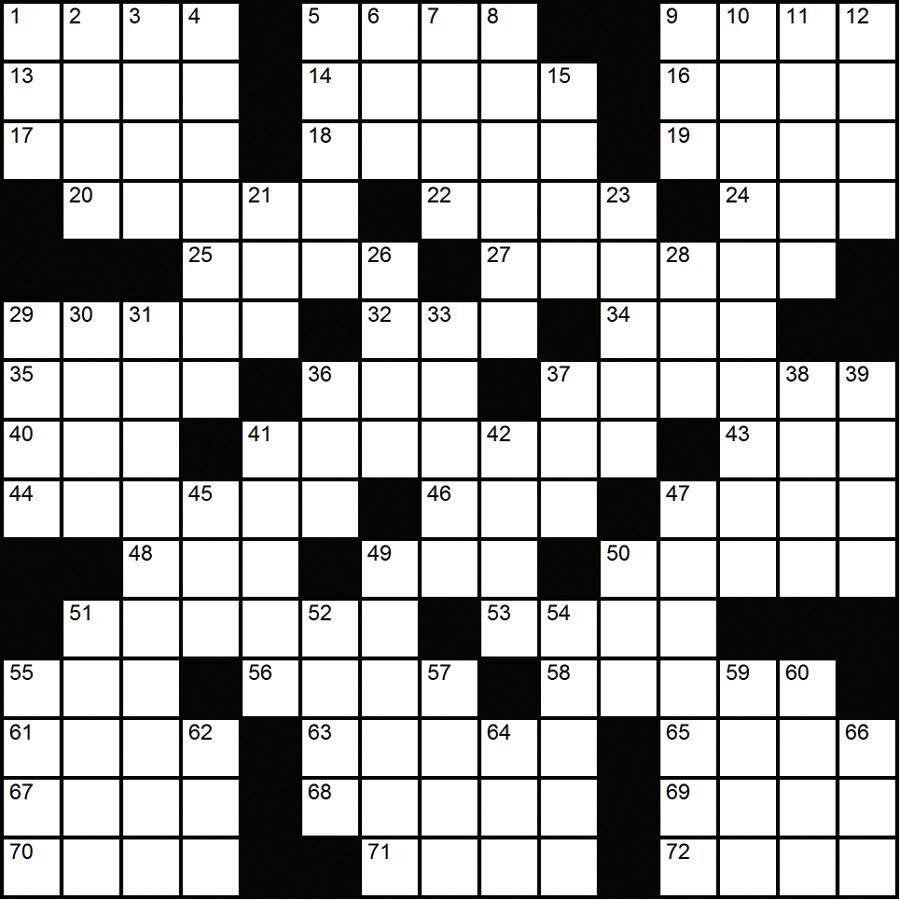




Last week's Answers
How StreetWise Works
StreetWise exists to elevate marginalized voices and provide opportunities for individuals to earn an income and gain employment. Anyone who wants to work has the opportunity to move themselves out of crisis.

StreetWise provides “a hand up, not a handout.”
All vendors go through an orientation focusing on their rights and responsibilities as a StreetWise Magazine Vendor. Authorized vendors have badges with their name, picture and current year.


Vendors purchase the magazine for $1.15 and sell it for $3 plus tips. The vendor keeps all of their earnings.

Buy the Magazine, Take the Magazine
When you buy the magazine, take the magazine, and read the magazine, you are supporting our microentrepreneurs earning an income with dignity.
New vendor orientation is every Tuesday and Thursday at 10:00 a.m. at 2009 S. State St. Find your nearest vendor at www.streetwise.org
Copyright ©2023 PuzzleJunction.com Streetwise Sudoku PuzzleJunction.com Sudoku Solution
Copyright ©2023 PuzzleJunction.com Sudoku Solution ©2023 PuzzleJunction.com Solution 41 Sharpshooter Oakley 42 Chaps 45 Escort’s offering 47 It went down in 1912 49 Tranquil 50 Bonkers 51 Part of a TV feed 52 Criticizes 54 Hosiery material 55 Use a sieve 57 Type of tide 59 Angel’s headwear 60 Christiania, now 62 Bishop’s jurisdiction 64 Bakery item 66 Query Bad day for Caesar Henhouse sounds Space is their place Penalty Whelk Pandora’s boxful Carry Fencing sword Restaurant hire Down Police alert, for short Rum drink Make well Germane Lake Turkana locale Reverence 7 Slangy assents 8 Bloviated 9 Havana residue 10 1996 Travolta fantasy 11 Kind of energy 12 Small whirlpool 15 Skidded 21 Canyon feature 23 Unbending 26 Go belly up 28 Business card abbr. 29 Em, to Dorothy 30 Like Superman’s vision 31 Component 33 Bungling 36 Deli sandwich 37 “Valmont” actress Tilly 38 Icy coating 39 Scurried
Streetwise 4/16/23 Crossword PuzzleJunction.com ©2023 PuzzleJunction.com 41 Historic period 42 “___ so fast!” 45 Garden area 48 GPS heading 52 ET’s craft 54 Crew tool 55 Coronet 56 Paul of Crocodile Dundee 57 Bungling 58 Boxer Liston 59 Heavenly hunter 60 Boiling mad 61 “Put up your ___!” Across 1 Former 5 Movie pooch 9 Bearded animal 13 Kitchen extension? 14 Speaker’s platform 15 Secret language 17 Any day now 18 Have supper 19 SaintGermain’s river 20 Comb stoppers 22 Table extender 24 Aquatic plant 25 Slangy assent 26 Supermodel Benitez 28 Carnival attractions 30 Pig’s digs 31 Auction action 32 Cantina cooker 35 Dash 38 Washed-out 43 Get-out-of-jail money 44 Hard wood 46 Dollar rival 47 “The Wild Duck” playwright 49 Icelandic epic 50 “Groovy!” 51 Cashew, e.g. 53 Engine part 55 Robber 58 Fizzy drink 60 Infamous Amin 70 Military group 72 Gather leaves 73 Vineyard fruit 74 Dwarf buffalo 75 Route for BenHur 76 Hill dwellers 77 Actress Redgrave 78 Love ___ Down 1 Annoying 2 Priest’s urging 3 Sitting spot 4 Carnival sight 10 Mountain nymph 11 Spry 12 Picker-uppers 16 Mad Hatter’s drink 21 Workout unit 23 Datebook abbr. 27 Harp’s cousin 29 Nev. neighbor 30 Store sign 31 Road turn 32 ___-Wan Kenobi 33 Chem class 34 Fleur-de-___
©PuzzleJunction.com
Crossword
-or-
BENEFITS ARE WITHIN REACH!
Get connected!
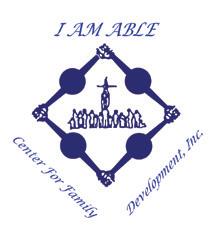
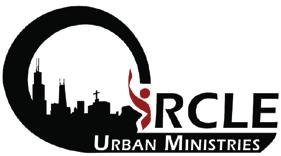
The Benefits Access Network helps connect neighbors to food and medical benefits like SNAP and Medicaid in Austin, Englewood and Lawndale. Assistance is free.
WE CAN HELP:
• Determine eligibility for food benefits (SNAP/Link Card) and/or health insurance (Medicaid)


• Provide application support for first-time applicants


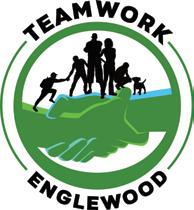
• Recertify expiring food or health benefits

• Refer you to resources on WIC, LIHEAP and EITC

Your health shouldn’t be on hold. Our partners can help you avoid delays so you and your family can receive benefits now.
TO LEARN MORE, VISIT: chicagosfoodbank.org/BAN


Benefits Access Network


This institution is an equal opportunity provider and employer. This project has been funded at least in part with Federal funds from the U.S. Department of Agriculture. The contents of this publication do not necessarily reflect the view or policies of the U.S. Department of Agriculture, nor does mention of trade names, commercial products, or organizations imply endorsement by the U.S. Government.































































